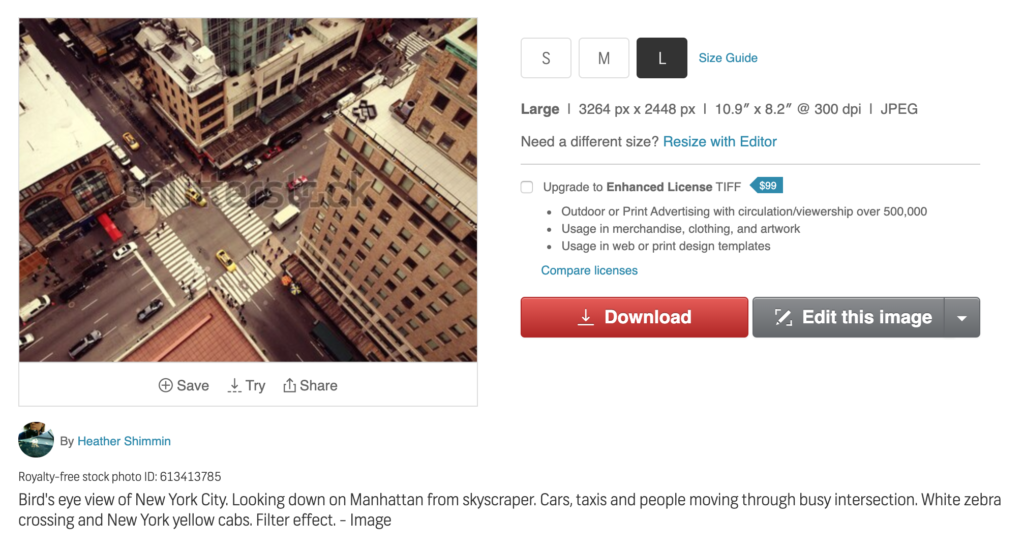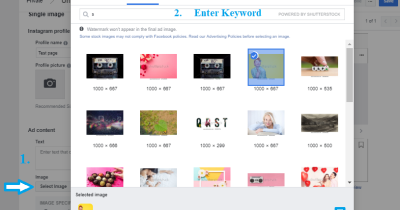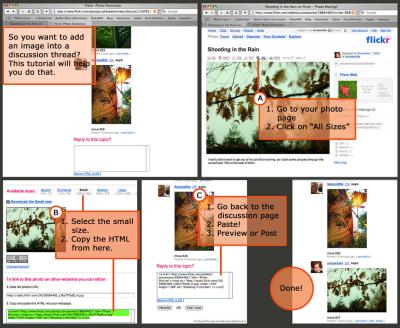If you’ve ever browsed through stock images online, chances are you’ve come across Shutterstock—a platform full of stunning visuals for almost any project. But before you start using those images, it’s essential to understand how licensing works. Shutterstock offers various licenses that determine how you can use their images, and using an image without the proper license can lead to legal trouble. In this post, we’ll explore the ins and outs of
Types of Shutterstock Licenses and Their Implications

Shutterstock provides primarily two types of licenses: Standard License and Enhanced License. Each comes with its own rules about usage duration, distribution, and rights. Understanding these differences is key to making sure you’re compliant and avoiding unexpected issues down the line.
Standard License
The Standard License is suitable for most typical uses—like websites, social media, presentations, and print materials up to 500,000 copies. When you purchase an image under this license, you gain the right to use it in your project for a perpetual duration—meaning, once you’ve licensed the image, you can use it forever. There’s no expiration date or time limit for your usage, which is great for ongoing campaigns or projects you plan to keep running.
However, there are some restrictions to keep in mind:
- Use is limited to a maximum of 500,000 copies or views.
- Cannot be used for merchandise that will be sold or for sensitive subjects.
- Cannot be used in products for resale, like t-shirts or mugs, unless you upgrade to an Extended License.
In essence, once you’ve licensed an image with a Standard License, you have the right to use it forever, but only within the specified limits. This is ideal for most digital and print uses where the scope isn’t too broad or commercialized.
Enhanced License
The Enhanced License is designed for more extensive or commercial uses, such as large-scale advertising, merchandise, or products for resale. It provides additional rights, including the ability to use images in products for sale and in larger quantities. With this license, your usage is also perpetual—there’s no expiration date after purchase.
What sets the Enhanced License apart is the increased scope and flexibility:
- No limit on copies or views.
- Allows use in merchandise for resale, like apparel or packaging.
- Permits use in print runs exceeding 500,000 copies.
- Includes the right to create derivative works.
Just like the Standard License, once you acquire an Enhanced License, your rights to use the image are ongoing. The key difference is the scope of permitted uses, making it suitable for large-scale commercial projects.
Summary
In both licensing options, Shutterstock grants perpetual rights once the license is purchased—there’s no time limit on your usage after the initial purchase. The main considerations are the scope of use and restrictions, which are clearly defined in each license type. Always choose the license that best fits your project’s needs to stay compliant and avoid legal issues down the road.
Factors Influencing How Long You Can Use Shutterstock Images Legally
When it comes to using Shutterstock images, understanding how long you can use them legally isn’t always straightforward. Several factors come into play that can influence the duration of your rights. Let’s break down the main elements:
Type of License
The most significant factor is the type of license you purchase. Shutterstock offers two primary licenses:
- Standard License: Usually suitable for most uses like websites, social media, and marketing materials. Typically, this license grants you the right to use the image indefinitely once purchased, but there are some restrictions.
- Extended License: Designed for more extensive uses, such as merchandise or large-scale printing. This license often extends usage rights further, but it’s important to check the specific terms for each image.
In general, the Standard License allows for unlimited use over time but within certain limits—like a maximum of 500,000 copies or views. Extended Licenses may lift some of these restrictions, offering more flexibility.
Intended Use and Distribution
The way you plan to use the image also impacts how long you can use it legally. For example:
- Use in a digital ad campaign might have different considerations than print.
- Mass distribution or resale of the image (like in merchandise) may require an Extended License.
- Using the image in a product that will be available indefinitely, like a poster, generally means you can keep using it as long as you adhere to the license terms.
However, if the license specifies a time limit or a specific scope, you need to respect those boundaries. Always double-check the license details at the time of purchase.
Legal Considerations and Restrictions
Some images come with specific restrictions that could affect your usage duration:
- Images with models or property releases might have additional limitations on how long you can use or display the image, especially if the rights are contingent on releases that could expire or be revoked.
- Licenses might specify geographic or territorial restrictions, impacting how long and where you can use the image.
- If you violate license terms, your right to use the image could be revoked immediately, regardless of how long you’ve been using it.
In summary, to understand your usage duration, always review the license agreement carefully, considering the type of license, intended use, and any restrictions tied to the image. When in doubt, consult Shutterstock’s licensing FAQs or contact their support for clarification.
How to Ensure Compliant Use of Shutterstock Images Over Time
Using Shutterstock images legally isn’t a one-and-done task—it’s an ongoing process. Here are some practical tips to keep your usage compliant over time:
Keep Detailed Records of Your Licenses
Always save copies of your purchase receipts, license agreements, and any correspondence related to the images. This documentation proves your legal right to use the images, especially if questions arise years down the line.
- Download and archive the license certificates.
- Note the date of purchase and the license type.
- Maintain records of any amendments or extensions.
This way, if your usage is ever questioned, you have clear proof of licensing coverage.
Regularly Review Your Usage
Periodically audit how you’re using Shutterstock images to ensure compliance. Check that:
- The images are still within their license scope.
- The usage hasn’t exceeded the limits (like copies or views for Standard Licenses).
- You’re not using images in ways that violate license restrictions (e.g., reselling or sublicensing).
Updating your records and usage logs helps catch potential issues early.
Be Mindful of License Expiry and Restrictions
While most Shutterstock licenses are perpetual, some restrictions may be tied to specific releases or agreements. If your license has a time limit or conditional restrictions, set reminders to review or renew if needed.
Also, if your project scope changes—say, expanding a campaign or increasing distribution—double-check that your current license still covers the new usage. When in doubt, consider upgrading your license or obtaining additional permissions.
Stay Informed and Seek Clarification
Licensing terms can evolve, so it’s wise to stay updated on Shutterstock’s policies. Regularly review their licensing FAQs and terms of service. If you’re unsure about the legality of your usage or need clarification, don’t hesitate to contact Shutterstock support directly. Better safe than sorry!
Respect Intellectual Property and Model Releases
Ensure you have the necessary model or property releases, especially if the image features identifiable individuals or private property. These releases can impact how long you can use the image, particularly if they have expiration clauses or conditions attached.
Maintaining compliance means respecting these legal agreements and monitoring their validity over time.
In summary, staying compliant with Shutterstock’s licensing requires vigilance, organization, and a proactive approach. By keeping good records, reviewing your usage regularly, and staying informed, you can enjoy the benefits of Shutterstock images while respecting legal boundaries—saving yourself from potential legal headaches down the road.
Legal Considerations and Best Practices for Image Usage
When it comes to using images from Shutterstock—or any stock photo provider—it’s essential to stay on the right side of the law. Many people assume that once they’ve purchased or licensed an image, they can do whatever they want with it. However, there are some key legal considerations to keep in mind to avoid unintended copyright infringement or legal issues down the line.
First and foremost, always read and understand the licensing agreement associated with each image. Shutterstock offers different types of licenses, primarily Standard and Extended, each with its own set of permissions and restrictions. For example, a Standard license typically allows you to use the image for most commercial purposes but might have limitations on the number of copies or impressions. An Extended license, on the other hand, gives you broader rights, such as unlimited reproductions or use in merchandise.
Next, consider the following best practices:
- Always attribute when required. Although Shutterstock images generally do not require attribution, some licensing agreements or specific images might have attribution requirements. Check the licensing terms carefully.
- Be mindful of the context. Using an image in a way that could be considered defamatory, offensive, or misleading can lead to legal trouble. For example, using an image of a person in a sensitive or controversial context without permission might infringe on their right of publicity or privacy.
- Use images only for the purposes outlined in your license. For example, if your license restricts commercial use, avoid using the image in advertising or promotional materials.
- Keep documentation of your licenses and usage rights. This can be crucial if you ever need to prove that you had the proper license to use an image.
Another important consideration is model and property releases. Some Shutterstock images include identifiable people or private properties. If your intended use is commercial—such as advertising or product packaging—you might need explicit releases from the individuals or property owners depicted. Shutterstock often provides this information upfront, so double-check the image details before using it for commercial purposes.
Finally, avoid modifying images in a way that could infringe on the rights of others or misrepresent the original content. For example, altering an image to include offensive content or to imply false associations can have legal consequences.
In summary, respecting licensing terms, understanding the scope of your rights, and being cautious about the context and modifications are all vital to using Shutterstock images legally and ethically.
Conclusion and Tips for Using Shutterstock Images Legally
Using images from Shutterstock can be a fantastic way to enhance your projects, websites, or marketing materials. However, it’s crucial to do so responsibly to avoid legal pitfalls. By understanding the licensing durations, adhering to usage rights, and following best practices, you can make the most of these resources without running into trouble.
Here are some handy tips to keep in mind:
- Always verify your license type. Know whether you have a Standard or Extended license, and understand what each permits.
- Pay attention to usage restrictions. Be clear on limits like the number of copies, geographic scope, or specific use cases.
- Keep records. Save licensing confirmations, receipts, and any relevant correspondence. This documentation can protect you if questions about your rights arise later.
- Respect model and property releases. For commercial use involving identifiable people or private properties, ensure you have the necessary releases.
- Use images ethically and responsibly. Avoid modifications that could mislead or harm someone’s reputation. Also, don’t use images in contexts that could be considered offensive or defamatory.
- Stay updated on licensing terms. Shutterstock’s policies and licensing options can change. Regularly review their terms to stay compliant.
Remember, the goal is to add visual appeal to your content while respecting the rights of creators and subjects. When in doubt, consult the licensing terms or seek legal advice—better safe than sorry! With a little diligence, you can confidently use Shutterstock images to make your projects shine without risking legal issues.


